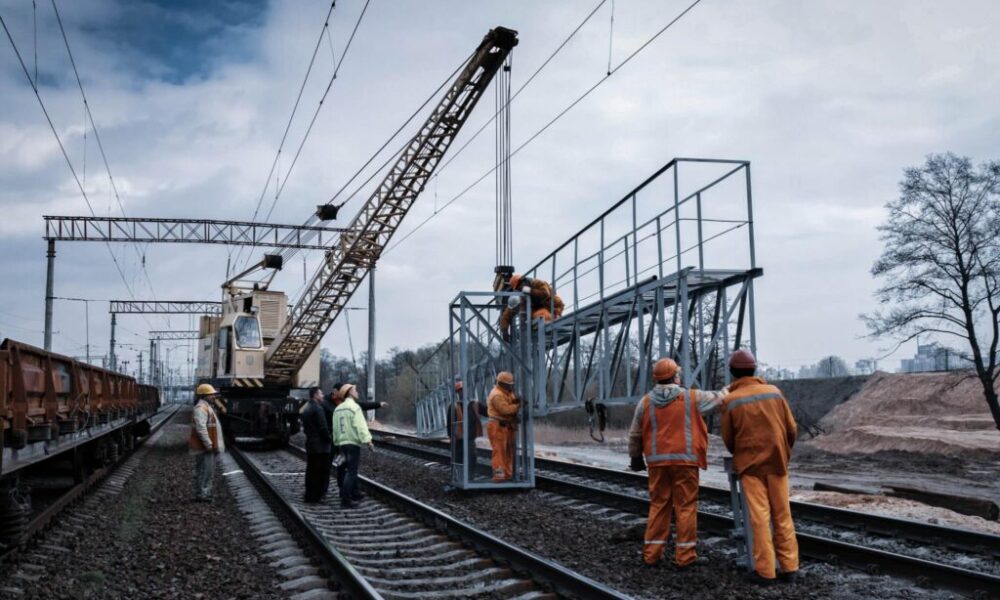3 Innovative Strategies for Effective Construction Workforce Management

Picture this: a bustling construction site where every worker plays a crucial role in bringing projects to life.
However, managing such a diverse workforce is quite challenging. This is where innovation comes to our aid.
Today, we’re exploring three game-changing strategies that are shaking up how construction teams are managed.
From clever tech solutions to caring for the folks on-site, these methods aren’t just about getting the job done—they’re about making construction work better for everyone involved.
Ready to see how? Let’s get started!
Main Issues Faced with Construction Workforce Management
Navigating the complexities of construction workforce management isn’t a walk in the park.
Several challenges rear their heads, often causing headaches for project managers and team leaders alike:
Fluctuating Project Demands and Deadlines
Construction projects often face unpredictable timelines due to factors such as adverse weather conditions, delays in material delivery, or unexpected changes requested by clients.
For example, imagine a construction project scheduled to build a residential complex.
However, heavy rainfall prolongs the excavation process, pushing back the project timeline and disrupting the planned workflow. This unpredictability makes it challenging for project managers to maintain efficiency and allocate resources effectively.
Shortage of Skilled Labor
Even though there were around 129,000 construction job openings back in February, the construction industry grapples with a persistent shortage of skilled labor, leading to fierce competition among companies to recruit and retain qualified workers. Consider a scenario where a construction firm is undertaking a commercial building project.
Despite offering competitive wages, the company needs help finding experienced carpenters. This shortage of skilled labor affects productivity and poses a significant challenge for workforce management, potentially delaying the construction schedule and impacting project costs.
Ensuring Safety and Well-being
Fatal falls, trips and slips are still main causes of concern in construction projects in the US. Construction sites are inherently hazardous environments, necessitating stringent safety measures to protect workers from accidents & injuries.
For instance, imagine a large-scale infrastructure project involving heavy machinery and high-rise structures.
To make sure construction workers are safe, the construction company implements comprehensive safety training programs, conducts regular site inspections, and provides personal protective equipment (PPE) to all employees.
Prioritizing safety safeguards workers’ health and minimizes the risk of project delays and legal liabilities.
Communication Breakdowns
Effective communication is very important for successful construction projects, yet breakdowns often occur due to the involvement of multiple stakeholders, including architects, engineers, subcontractors, and laborers.
Take, for example, a renovation project for a historic building. Miscommunication between the architectural team and the construction crew regarding design specifications leads to errors during renovation.
Clear and consistent communication channels are essential to prevent misunderstandings, improve collaboration, and meet project milestones.
Outdated Workforce Management Methods
Traditional workforce management methods, such as manual scheduling and paper-based record-keeping, are becoming obsolete in today’s digital age.
For instance, imagine a construction company still relying on handwritten schedules and physical punch cards to track employee attendance and work hours.
As global investment in construction tech is growing, adopting modern workforce management solutions, such as digital scheduling software and mobile apps, streamlines administrative tasks, reduces paperwork, and enhances overall efficiency on construction sites. Embracing technology is essential for staying competitive and meeting the ever-evolving demands of the construction industry.
Managing a construction workforce effectively requires innovative strategies that address the industry’s unique challenges.
Here are three top strategies revolutionizing construction workforce management:
Utilizing Advanced Technology
Incorporating advanced technology tools and solutions is crucial for enhancing productivity and streamlining operations on construction sites.
One such technology is geofencing combined with GPS tracking systems. Geofencing allows construction managers to define virtual boundaries around specific areas of a job site.
GPS tracking enables real-time monitoring of workers’ locations, ensuring they remain within designated zones and providing insights into their movements throughout the day.
For example, a construction company implementing geofencing and GPS tracking can accurately track the time spent by workers at different locations on a large-scale project, enabling better resource allocation and project planning.
Implementing Lean Construction Principles
Lean construction principles prioritize minimizing waste and maximizing efficiency throughout the project lifecycle. By applying lean methodologies, construction teams can identify and eliminate non-value-added activities, optimize workflows, and improve overall project performance.
For instance, adopting lean construction practices may involve implementing just-in-time material delivery to reduce inventory costs and minimize on-site storage requirements.
Additionally, lean construction emphasizes collaborative planning and communication among project stakeholders, fostering a culture of continuous improvement and innovation.
Prioritizing Employee Training and Development
Investing in the training and development of construction workers is essential for enhancing skills, increasing job satisfaction, and reducing turnover rates. Comprehensive training programs improve workers’ proficiency in their respective roles and ensure compliance with safety regulations and industry standards.
For example, a construction company may offer specialized training sessions on equipment operation, safety protocols, and construction techniques to empower workers with the knowledge and skills required to perform the tasks efficiently and safely.
Moreover, fostering a culture of continuous learning and career advancement encourages employee retention and enhances the overall competency of the workforce.
How to Implement These Strategies Today
Implementing innovative strategies for effective construction workforce management requires careful planning and execution.
Here are some brief tips on how to implement these strategies:
Utilizing Advanced Technology
- Research and invest in geofencing and GPS tracking systems that best suit the needs of your construction projects.
- Provide comprehensive training to workers on how to use these technologies effectively and address any concerns or resistance to adoption.
- Establish clear policies and guidelines for the use of geofencing and GPS tracking to ensure compliance with privacy regulations and respect for workers’ rights.
Implementing Lean Construction Principles
- Educate project teams on lean construction principles and the benefits of adopting a lean mindset.
- Conduct value stream mapping exercises to identify areas of waste and inefficiency in construction processes.
- Foster collaboration and communication among project stakeholders to streamline workflows and eliminate bottlenecks.
Prioritizing Employee Training and Development
- Assess the skills and training requirements of your workforce to identify areas for improvement.
- Develop tailored training programs that address specific skill gaps and safety requirements.
- Encourage participation in professional development opportunities and provide incentives for continuous learning and advancement.
Building Success: Innovative Strategies for Construction Workforce Management
Effective construction workforce management is essential for project success in today’s dynamic industry landscape.
By embracing innovative strategies such as utilizing advanced technology, implementing lean construction principles, and prioritizing employee training and development, construction companies can overcome challenges and achieve greater efficiency, productivity, and safety on their projects.
Construction firms must adapt to the changing demands of the industry and leverage these strategies to stay competitive and deliver exceptional results.
Construction companies can build a foundation for long-term success and sustainability by investing in their workforce and embracing innovation.





